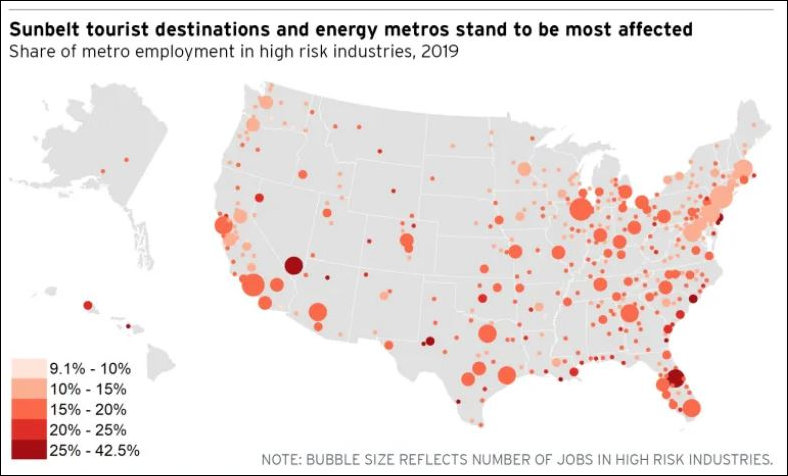
Virginia’s metropolitan areas are somewhat less exposed than other metros to the risk of job losses stemming from the COVID-19 epidemic, according to a new report by the Brookings Institution.
The Hampton Roads metro, home to substantial travel-and-tourism businesses in Virginia Beach and Williamsburg, is the most vulnerable with 16.5% of jobs in what Brookings defines as “high-risk industries.” Those disruption-prone industries include mining/oil & gas, transportation, employment services, travel arrangements, and leisure and hospitality. The least vulnerable Virginia metro was Winchester, with only 13.2% of jobs in high-risk industries.
Nationally, the percentage of jobs in high-risk industries ranges from a low of 9.1% in Madera, Calif., to 42.5% in Midland, Texas. Here’s a breakdown of Virginia metros:
Hampton Roads –16.5% — ranked 136th most vulnerable of 384 metros.
Harrisonburg — 15.8% — ranked 169th.
Metro halfway mark — 192
Bristol/Kingsport — 15.4% — ranked 194th.
Charlottesville — 15.1% — ranked 214th.
Richmond — 15.0% — ranked 224th.
Roanoke — 14.9% — ranked 234th.
Blacksburg — 14.5% — ranked 259th.
Lynchburg — 14.2% — ranked 281st.
Staunton — 14.2% — ranked 282nd.
Washington/Arlington — 13.3% — ranked 317th.
Winchester — 13.2% — ranked 323rd.
— JAB

Leave a Reply
You must be logged in to post a comment.